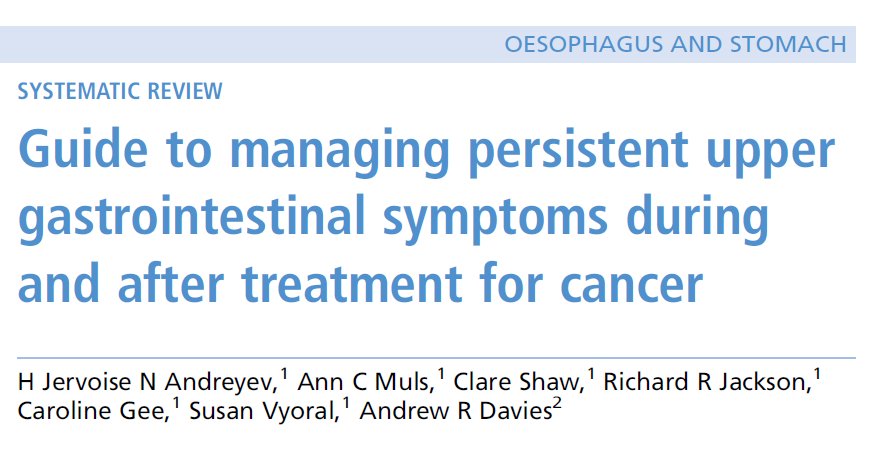Comment on recent publication : Symptoms after major UGI surgery are very common. Follow up is also challenging with access to dietetic support variable and many patients being followed up in their local hospital away from the expertise of the centre that performed their surgery. This multi-disciplinary guideline document used Delphi surveys to canvass the opinions of nearly 60 specialists in the field to gain a consensus on managing these challenging problems.

BACKGROUND:
Guidance: the practical management of the gastrointestinal symptoms of pelvic radiation disease was published in 2014 for a multidisciplinary audience. Following this, a companion guide to managing upper gastrointestinal (GI) consequences was developed.
AIMS:
The development and peer review of an algorithm which could be accessible to all types of clinicians working with patients experiencing upper GI symptoms following cancer treatment.
METHODS:
Experts who manage patients with upper GI symptoms were asked to review the guide, rating each section for agreement with the recommended measures and suggesting amendments if necessary. Specific comments were discussed and incorporated as appropriate, and this process was repeated for a second round of review.
RESULTS:
21 gastroenterologists, 11 upper GI surgeons, 9 specialist dietitians, 8 clinical nurse specialists, 5 clinical oncologists, 3 medical oncologists and 4 others participated in the review. Consensus (defined prospectively as 60% or more panellists selecting ‘strongly agree’ or ‘agree’) was reached for all of the original 31 sections in the guide, with a median of 90%. 85% of panellists agreed that the guide was acceptable for publication or acceptable with minor revisions. 56 of the original 61 panellists participated in round 2. 93% agreed it was acceptable for publication after the first revision. Further minor amendments were made in response to round 2.
CONCLUSIONS:
Feedback from the panel of experts developed the guide with improvement of occasional algorithmic steps, a more user-friendly layout, clearer time frames for referral to other teams and addition of procedures to the appendix.




